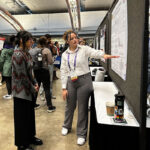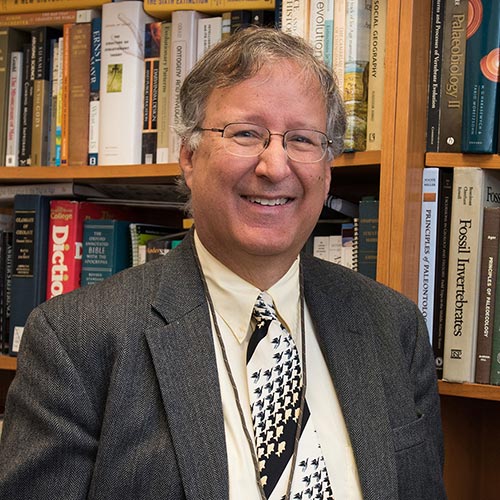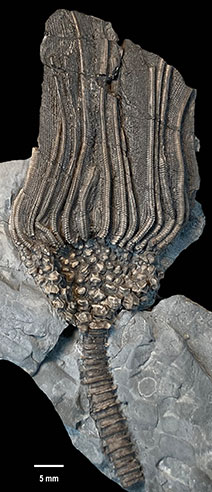
Earth Sciences professor names fossil for Wooster

Mark Wilson, the Lewis M. and Marian Senter Nixon Professor of Natural Sciences in the Department of Earth Sciences at The College of Wooster, and his colleague Bill Ausich, a professor at The Ohio State University, recently named a fossil after the College. The holotype, or defining example of the newly-named Cactocrinus woosterensis, is a 350-million-year-old crinoid fossil that was first found decades ago by Wooster faculty and students in the abandoned Wooster Medal Brick and Tile Quarry. They donated it to the Cleveland Museum of Natural History, where Wilson and Ausich discovered it in the collections.
Cactocrinus woosterensis is an echinoderm, a marine group which also contains sea stars, sea urchins, and sea cucumbers. “Crinoids are commonly called ‘sea lilies’ because they have long stems rooted in the sea bottom with a flower-like crown of numerous arms surrounding the main body at the other end,” Wilson said. “They feed by filtering nutrients from the seawater with these arms. Crinoids are common in some parts of the fossil record and are still alive today.”

Cactocrinus woosterensis
Wilson and Ausich recently published a paper in the Journal of Paleontology about the fossil and their decision to name it after Wooster. “The species name recognizes The College of Wooster in Wooster, Ohio, for its decades of support of paleontological research,” they wrote. “The holotype of Cactocrinus woosterensis and many other specimens in this fauna were collected by professors and students from the Department of Geology at The College of Wooster.” The names of those who originally discovered it were not recorded.
Cactocrinus woosterensis is a new species of crinoid, which means it was not previously described in scientific literature. “It gives us more information about the evolution and ecology of this fascinating group,” Wilson said. “The specimen is also preserved unusually well for a crinoid in a shale deposit, where they are usually highly fragmented.”
Wilson said that finding this significant specimen in the museum’s collections that was originally discovered by Wooster faculty and students demonstrates two things: “One, the importance of fieldwork for discovering and documenting new scientific information, and two, the critical role museums play in preserving specimens for scientific study.”
Posted in News on May 11, 2023.
Related Posts
Related Areas of Study
Earth Sciences
Geology, environmental geoscience, geophysics, and other classes that explore Earth and the impact of humans
MinorGeology
Start research in your first year and graduate with a strong foundation in the Earth Sciences.
Major MinorEnvironmental Geoscience
Investigate the impact humans have on the Earth and research ways to solve pressing environmental problems.
Major Minor

